Madagascar’s sapphire frontier town: The hard life in pursuit of gemstones.
ILAKAKA, Madagascar—
Southern Madagascar is a land awash in superstition—of witches and reincarnation and haunted bridges where children leap out of the darkness to send cars careening into the abyss. As our driver pulls over for the night in the roadside town of Ambalavao en route south to Ilakaka, a once-booming sapphire town, I notice my French-Malagasy photographer Rija’s face turn ashen. He recalls his last stay here, when an unsettling late-night encounter with a delirious old woman ended in her vowing that he would not finish his journey “intact.” A few days later, his camera bag inexplicably vanished from the top of a bush taxi. He has never quite shaken the feeling that he was cursed that night in Ambalavao.
One might forgive Madagascar’s entire southern region for concluding it has been dealt a similar fate. In contrast to the verdant rolling hills of northern and central Madagascar, large swaths of the southern plains are arid and prone to food shortages. Seven in 10 southern households don’t have enough food. In 2009 a coup in the capital, Antananarivo, unleashed a cascade of crises across the country. Since then a series of droughts have conspired with the worst locust outbreak in more than 50 years to compound the south’s hardship. Heavily armed gangs of cattle rustlers now roam with impunity. Banditry has grown so bad that long stretches of national highways are no-go zones for authorities.
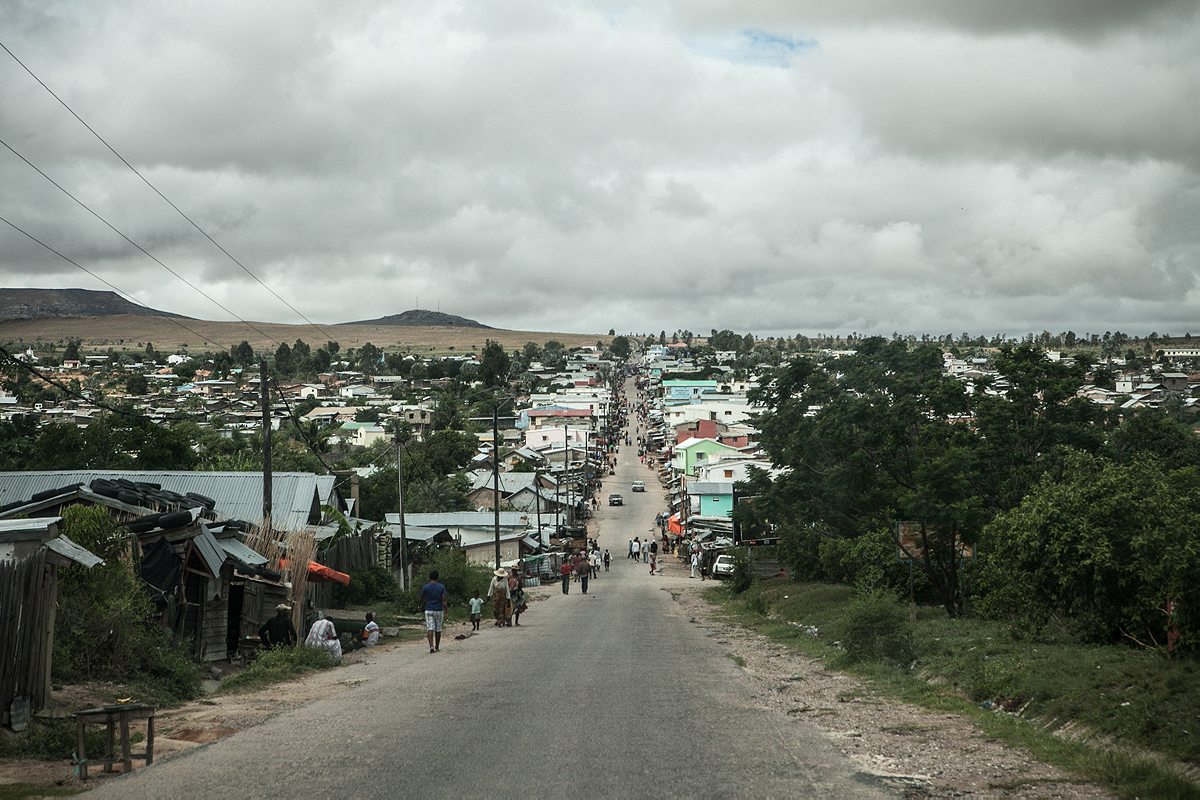
Every so often, however, the gods do smile on this forbidding land. Consider the case of Ilakaka. Until 1998 Ilakaka was home to a handful of houses, a few dozen residents, abundant scrubland—and little of particular interest. Then came the gemstone boom. Fifteen years later, with Madagascar having just elected a new president and hoping to finally put five years of political upheaval behind it, Ilakaka is the country’s greatest and unlikeliest boomtown—and a stark reminder of the persistent obstacles of making genuine progress in a blighted land.
The story of today’s Ilakaka begins in the early 1990s. The first significant discoveries of gemstones came in northern Madagascar, fueling waves of migration to the fringes of its vast forests. Meanwhile, in the south, a smaller number of prospectors were collecting garnets to sell to foreign dealers. One batch from Ilakaka, a sharp-eyed buyer noticed, were not garnets at all, but something exponentially more lucrative: pink sapphire.
Word spread quickly. Within a year thousands of ramshackle tenements sprawled on either side of National Route 7. Tom Cushman, a sailor-mouthed American gem dealer who’d first come to Madagascar in 1991, was one of the first to set up shop in Ilakaka. “I was down there in September [1998] and there were only about five of us buying. Buying out of our cars. There was no town,” Cushman recalls. The vibe, he says, was 1849 Sacramento Valley. By early 1999, according to Cushman, there were tens of thousands of people seeking their fortunes. By late 1999 there were 100,000.
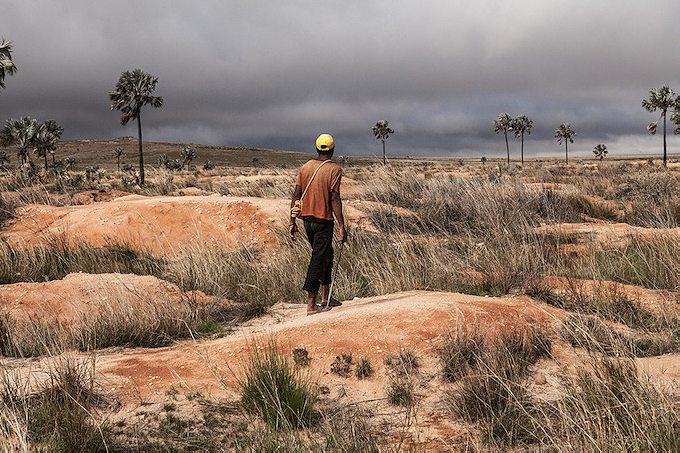
Cushman tried to spend at least $1,000 a day. The selection was endless—the deep blue sapphires international buyers lusted over were everywhere, alongside pinks, yellows, and rubies. Once the Thais and Sri Lankans, masters of the sapphire trade, arrived, as much as $2 million a week was changing hands. Virtually overnight this sleepy hamlet became the sapphire capital of the world. Anywhere from a third to half of the world’s sapphire production poured out of its once fallow soils. The myth of Ilakaka grew as fast as its population, drawn by the romance of a frontier town. Fantastic fortunes could be made with one lucky plant of a shovel. In a country where more than 90 percent of the population lives on less than $2 a day, single stones were being sold for hundreds of thousands of dollars.
We pulled into Ilakaka the next morning. The town leaves an underwhelming first impression: One drab gem dealership after the next lines a mile-long stretch of Route 7—Azmi Gems, Tonga Soa Siya Gems, La Terrasse Gems, New Sahara Alex Saphir. Inside, foreign dealers sit bored at their desks, waiting for the next miner or middleman to present the morning’s haul for inspection.
It’s immediately apparent that Ilakaka has fallen on hard times. Big stones are few and far between. The low-hanging fruit in the town proper has all been snatched up; miners must walk miles in search of untapped reserves. For three months, the dealers say, almost nothing worth touching has passed through their doors.
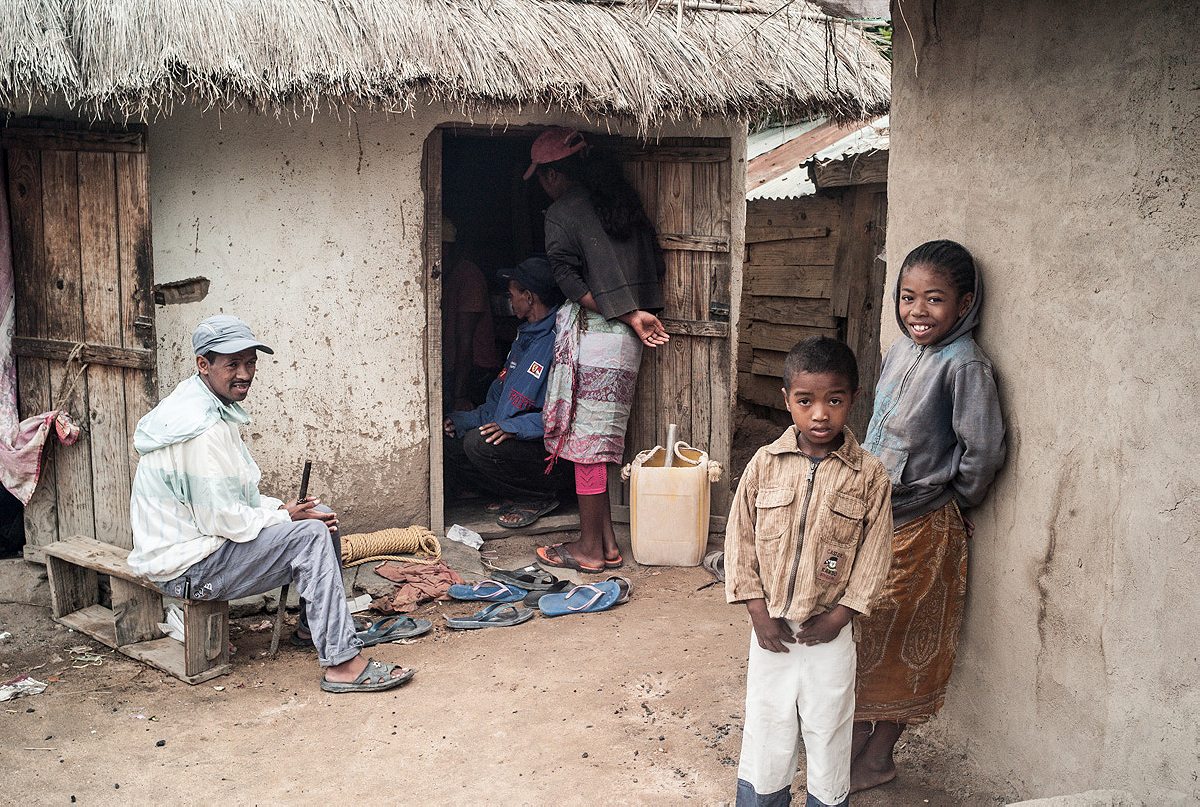
As we walk along the main street, a gregarious low-level dealer named Gilbert flags us down. He first came to Ilakaka in 1999 from a poor village in the southeast. He casually empties the contents of a pocket-sized manila envelope into his hand, trying to interest us in a purple stone he says he bought for 1,500 ariary (about 65 cents) and hopes to sell for 2,000. His demeanor cools as we indicate we’re here to talk, not buy. He does, however, offer a frustrated rumination on the state of business. “It’s not OK. Not good at all,” he huffs. “I have a lot of trouble finding buyers.”
The small crowd that’s gathered around us nods in agreement. The problem, says Jean Florent Ramonja, a security guard, is too few vazha—foreigners. The down market has sent many vazha packing for the up-and-coming gem fields in Mozambique and Tanzania. Like Gilbert, Ramonja arrived in Ilakaka in 1999 and has no intention of leaving. “There will always be business here,” he says, gesturing at the dozens of shops that now comprise something of a trading hub for sapphires from across the region. “And I can always go somewhere else if there are stones. But I will return here because it’s home.”
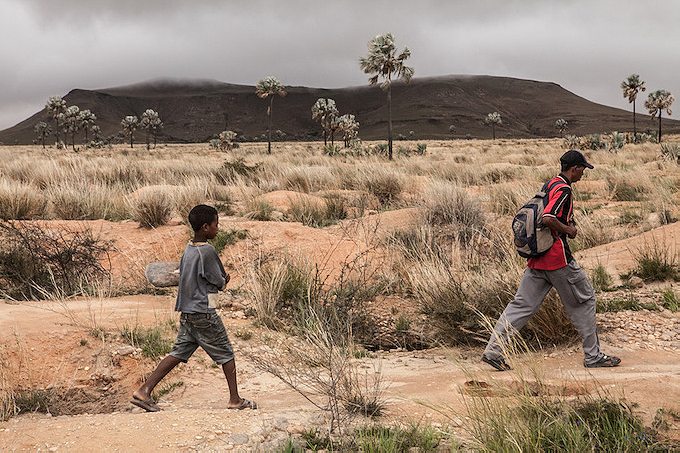
Boomtowns don’t last forever. Yet some boom bigger and longer and with greater rewards. Some, the anthropologist Andrew Walsh points out, become San Francisco. Ilakaka has enjoyed a run the likes of which most Malagasy towns can only envy. But it’s also suffered from the notorious corruption and dysfunction of Madagascar’s political class. Most recently there was the personal rift between two egomaniacal tycoons—one the former president, Marc Ravalomanana, who made his fortune in dairy; the other the then-mayor of Antananarivo, Andry Rajoelina, an advertising giant—that escalated into the coup in 2009. Foreign aid, previously 40 percent of the state budget, was slashed. Investment disappeared and poverty skyrocketed. Meanwhile, Madagascar’s elites—widely believed to be involved in various rackets ranging from minerals to rosewood to rare tortoises—have fared just fine. Madagascar is not Mobutu Sese Seko’s Zaire, one Western official in Antananarivo told me, but there are some striking similarities.
HE RECALLS HIS LAST STAY HERE, WHEN A DELIRIOUS OLD WOMAN VOWED THAT HE WOULD NOT FINISH HIS JOURNEY “INTACT”
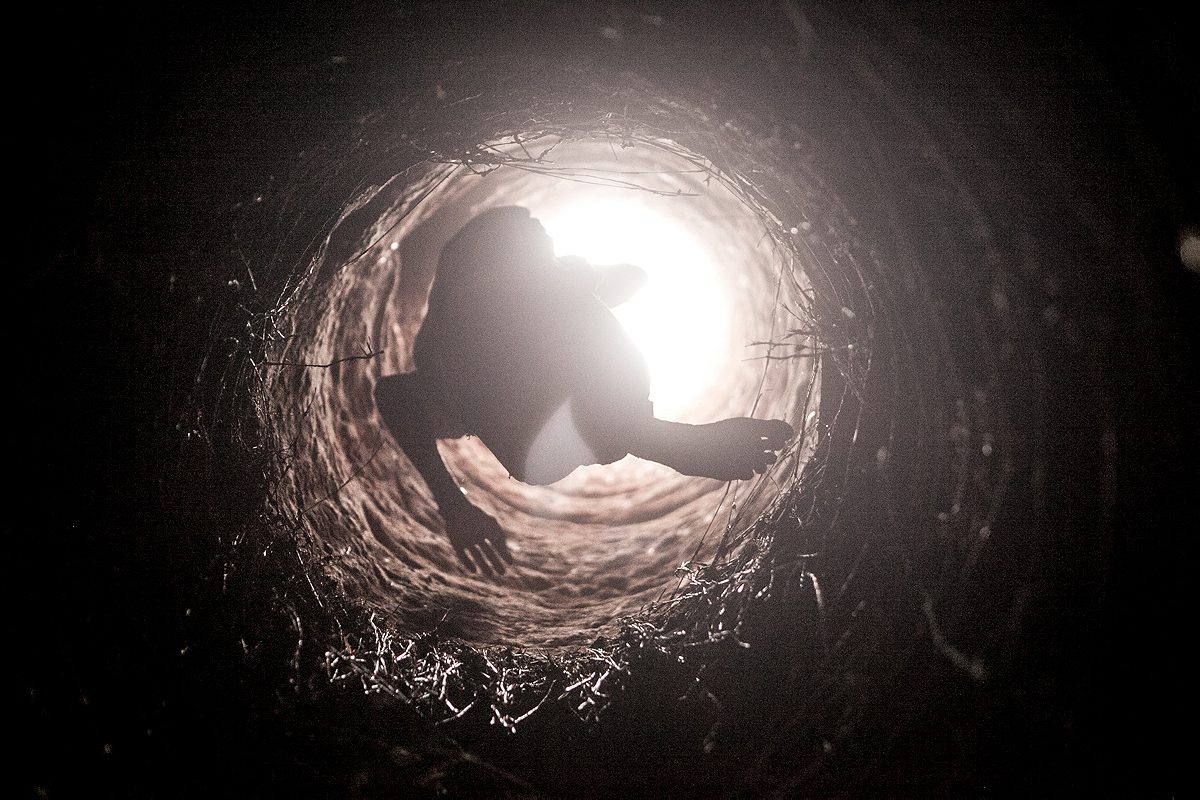
Ilakaka’s problems with the government began almost instantly. First, dictator-turned-president Didier Ratsiraka choked off most legal exports in the early years of the boom. His successor, Ravalomanana, initially eased restrictions. Then in 2008, in what Cushman describes as “a fit of pique” over one controversially exported stone, Ravalomanana banned all rough gemstone exports. An industry worth $30 million a year shriveled to $300,000.
Ravalomanana’s successor, Rajoelina, lifted the ban in 2010 and world demand for high-end sapphires has roared back to life since the global financial crisis. But Ilakaka looks unlikely to enjoy a similar recovery. Its population is down to roughly 30,000. Despite Madagascar’s mineral wealth—ranging from gemstones to nickel to iron—foreign investment throughout the mining sector has tailed off dramatically since the coup.
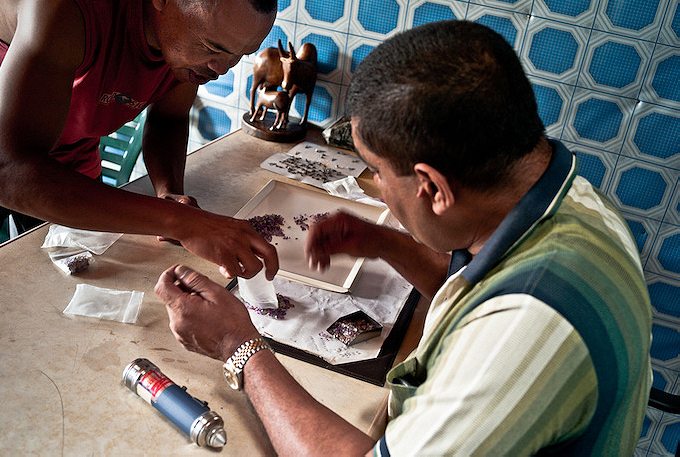
Some Ilakaka residents have clearly done well, others less so. Satellite dishes dot the main residential areas, and construction crews seem busy replacing wood shacks with brick-and-mortar outfits in the town center. But biting poverty remains the norm. Ilakaka’s local chief, Nestor Razanapanarivo, predicts the town’s population will soon double but concedes that the number of beggars has soared.
Early one morning, we meet Augustin Andriamanajary, who lives with his wife and two sons in a one-room, one-mattress hut resembling a prison cell. Andriamanajary, who is 34 with a face weathered by years in the sapphire quarries, first came to Ilakaka in 2001. Back then, he says, he sometimes earned more than $10 a day. “Before, it was better, but now there’s nothing.” Six days a week, from 8 a.m. until 6 p.m., he and eight of his neighbors toil in a quarry several miles west of town. They haven’t found any stones in at least two or three months, he tells me. I ask him why he stays. His answer suggests both an abundance of hope and a dearth of alternatives. “We suffer, so we have to stay to find more sapphire,” he replies. He adds that there may be gold to be found in the not-too-distant future.
The miners set out on foot for the quarry. One man carries a long yellow rope, a small rock pick, and a plastic bucket. Andriamanajary’s 11-year-old son, Solo, has a rusted silver hand shovel. They walk in silence, single-file along the narrow path. The surrounding terrain is like a Swiss cheese moonscape. The holes—10 or 15 meters deep, where prospectors once burrowed—easily outnumber trees.
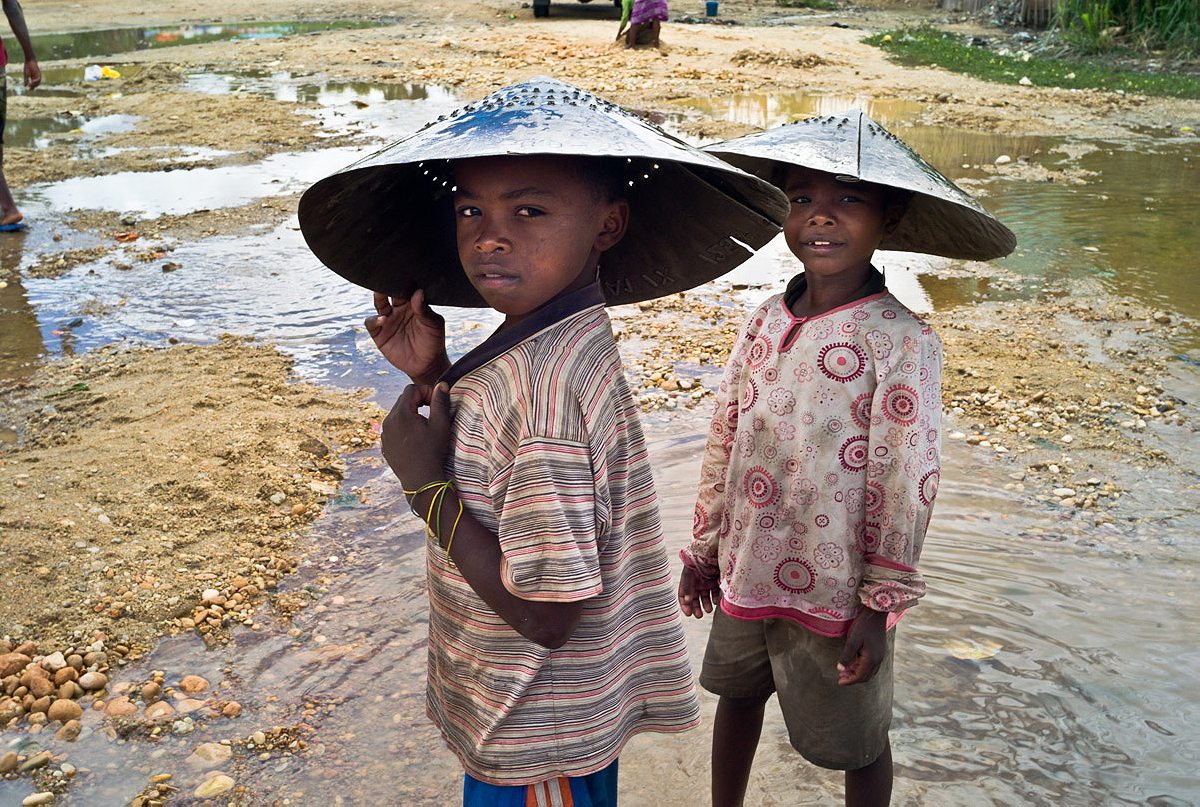
An hour later we arrive at a giant crater—perhaps 25 meters in diameter and 10 meters deep. The miners first found this spot in 2007. Back then there were 17 of them and an Indian boss who funded the digging. Now their numbers are down to nine, ranging in age from 11 to 56 years old. At the far end of the quarry is a nearly 20-meter-deep hole, just wide enough for Andriamanajary to squeeze through as he is lowered by a wooden crank pulley. From the bottom, he starts loading the bucket with dirt from the walls of an adjacent tunnel and sending it back up to the surface to be sifted. Each miner spends four hours underground before being relieved.
The work is dangerous. Holes often collapse without warning. All the mining in Ilakaka is done manually. Even the big commercial mines—known as the Swiss Bank, World Bank, and African Bank—rely on little more than shovel labor. For stones so small, investments in heavy machinery don’t make much financial sense.
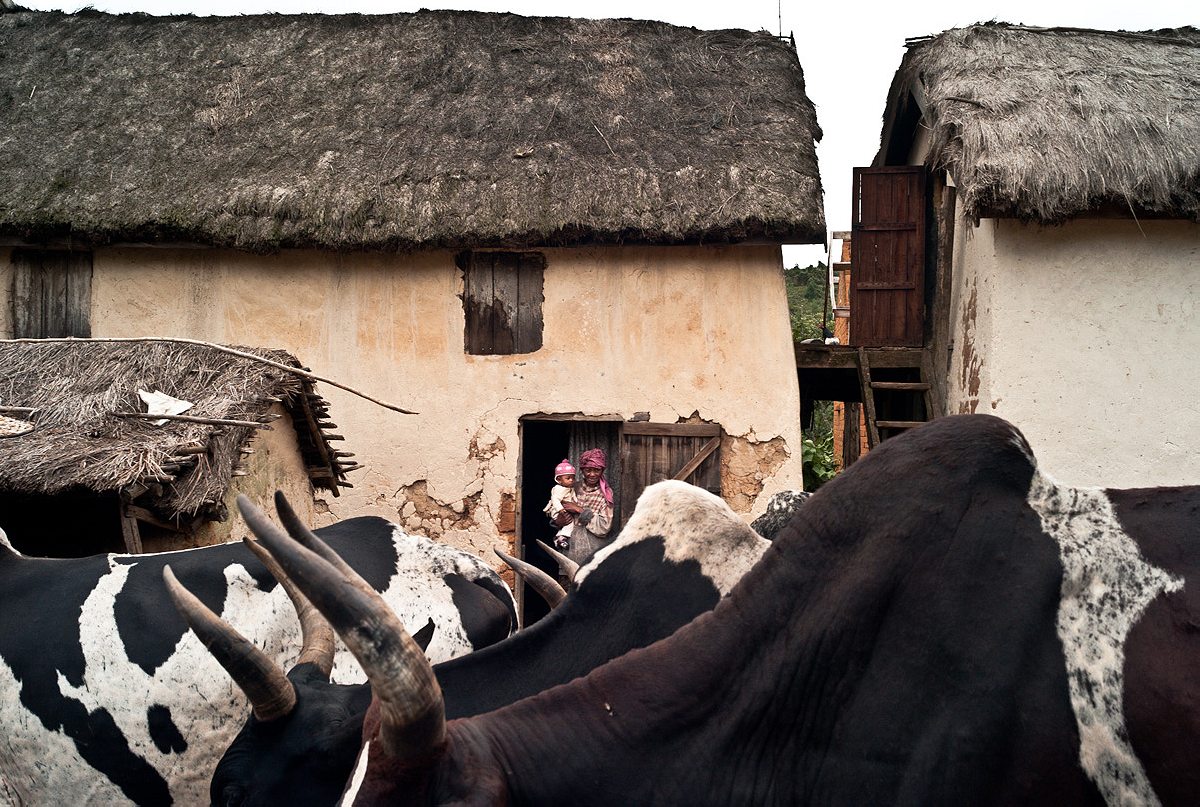
After a couple of hours, Rija and I must head out. Andriamanajary, every inch of his wafer-thin frame caked in red soil, comes up to bid us farewell. We drive back toward town. I find myself marveling at the hopefulness of Andriamanajary and the other miners we’ve met. Almost everyone has been here 12 or 13 years. They have not struck it rich. Their lives are not substantially better than those they left behind. They live at the mercy of an international jewelry market whose whims even industry experts struggle to explain. Yet their belief that better days lie ahead feels, for better or worse, boundless. “I think there will be sapphire [in Ilakaka] for another 100 years!” Razanapanarivo, the local chief, exclaims when I ask about the town’s waning reserves.
Cushman, who now heads a consultancy for foreign investors in Antananarivo, finds hope in Ilakaka’s example. “The guys in Ilakaka are looking at the future,” he says. “And most of the other people in the country are looking at the past. So if you want to develop a managerial class, you would do well to start with those guys in Ilakaka because they’ve got initiative, they’ve got drive, hope. They’ve got future expectations. Most everyone else who lives in the bush in the south—they expect things to get worse. Because it’s always gotten worse. … But Ilakaka thinks it’s going to get better. And it will.”

On Jan. 25, Hery Rajaonarimampianina, the winner of the December presidential runoff, was sworn into office. Expectations are mixed. Though the transition is predicted to accelerate the flow of aid, it’s not clear how much will change. Rajaonarimampianina is the handpicked successor of Rajoelina, the coup leader; hours after his inauguration, a grenade exploded outside the stadium where he was sworn in.
On a Sunday afternoon in Ilakaka, Rija and I drop in on a service at a local Pentecostal church. From our hotel, the pastor’s thunderous shouting sounds as though an exorcism is in process. In fact, he is soliciting contributions to build a new church. He complains that the donations are inadequate. “This is why you have to work for Jesus,” he implores. We try to enter inconspicuously through the back door, but all eyes turn our way anyway.
The pastor interrupts his pitch. He declares that God has sent us. Cries of “Hallelujah!” ring out all around. I don’t have the Malagasy to correct him. Nor do I really want to. There are worse things than too much faith.
Rijasolo is a photojournalist based in Madagascar. He is a stringer for Agence France-Presse and has collaborated with Libération, Le Monde, VSD, and Jeune Afrique.
This article was funded by a grant from the Pulitzer Center on Crisis Reporting.
